How to Brew Loose Leaf Tea
HOW TO BREW LOOSE LEAF TEA
Early spring teas leaves are bursting with flavors, aromas, and a large amount of beneficial nutrients.
Our green, white, oolong, yellow and black teas are Camellia si nensis var. sinensis, the botanical name for tea. All five varieties are made to differing levels of oxidization. Green tea is not oxidized; white is minimal, black tea is full, and oolong partially. The quality of a tea results from the farm’s terroir, farming practices, timing of the harvest, and importantly, the skill of the teamaker.
Preparing tea is not difficult, there is no need to make it compl icated. Three initial steps will ensure you enjoy all its flavors and aromas.

WATER
To enjoy a tea’s optimal flavor, it is essential to use either filtered water or spring water at the right temperature.

TEMPERATURE
The appearance of the tea leaves varies. Some teas are bulky and light and some are dense and heavy. For steeping, we recommend three grams (a teaspoon) or, if bulky (a tablespoon), of leaf for every six-to-eight ounce of water.
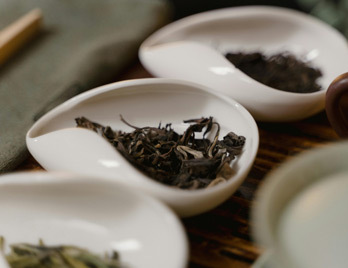
LEAF MEASUREMENT
Every type of tea has a preferred water temperature to bring out its best flavors. Water at lower temperatures will bring out more nuanced tastes and aromas than hotter water. Cooler water diminishes astringency, hotter water encourages it.
VARIETIES OF TEA

GREEN TEA
3 grams/1 teaspoon per 6 ounces of water
170° - 195° F
2 Minutes
Full-leaf green teas will open to layered, delicate flavors. The freshly picked leaves are dehydrated to prevent oxidization and preserve their natural green color. Japanese green teas are steamed to preserve their fresh aromas and flavor notes. It is best if green tea is not brewed with boiling water.
Lower temperature water allows the leaves to steep slowly, preserving their natural sweetness. Green teas and yellow teas offer a gentle vegetal aroma. In the mouth, flavors range from spring asparagus and delicate notes of sorrel and raw vegetables to herbaceous and nutty.
WHITE TEA
3 grams/1 tablespoon per 6 ounces of water
165° - 195° F
2 Minutes
White teas are produced in a brief window of time in the spring. The best whites are prized as they consist entirely of sweet buds. These teas are minimally processed in two steps – withering and drying.
Steeped white tea is delicate, extremely refreshing, and considered to contain less caffeine. The leaves will open to fresh floral, herbaceous, naturally sweet, and honey-like flavors. A stronger cup can be attained by extending the steep time.
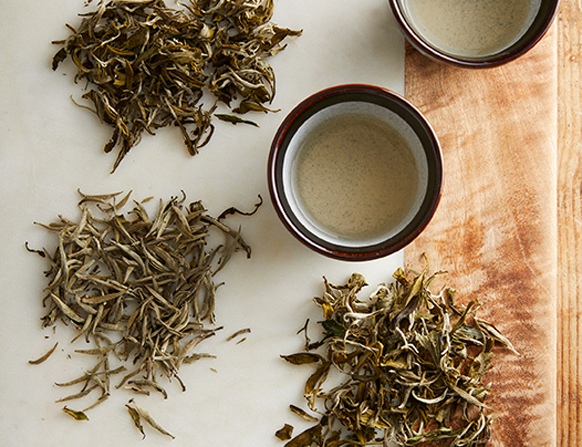
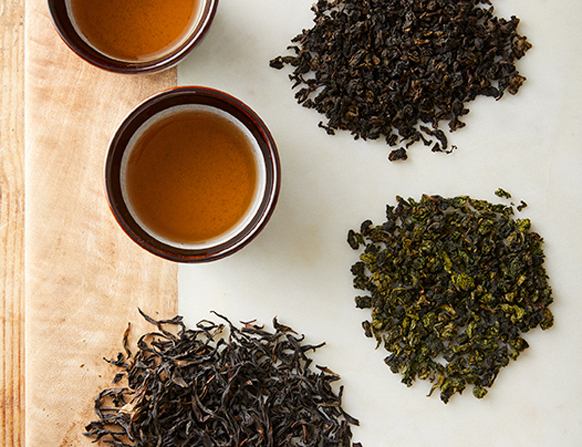
OOLONG TEA
3 grams/1 teaspoon per 6 ounces of water
195° - 205° F
2 Minutes
Oolong leaves are large. Once plucked, they are either rolled and lightly oxidized (Tieguanyin style) or are long and crafted to a reddish-brown color (Dan Cong style).
Tieguanyin is shades of green, almost blue. Its infusion opens to an aroma of lilies of the valley with a mouthfeel of gentle vegetal notes as it develops into a buttery, floral finish. Dan Cong is aromas of brown sugar and candied fruit. The mouthfeel is strong and full-bodied with a sweet, refreshing finish. In steeping, first rinse the leaves briefly to awaken them. This steep can be enjoyed for aroma. The second steep releases precious flavors. Multiple steeps are the norm for oolongs as they are complex and layered.
BLACK TEA
3 grams/1 teaspoon per 6 ounces of water
195° - 205° F
2 Minutes
Black tea is a leaf that has been fully oxidized. This rigorous oxidization produces a tea of hearty rich flavors while reducing its astringency and bringing out a natural sweetness.
Flavors will range from bright, brisk, peppery, clean, and smoky to aromatic, bold, malty, nutty, spicy, and sweet. Blacks are known for long, delicately aromatic, and comforting aftertastes. Note, they are often enjoyed with milk or sweetener.
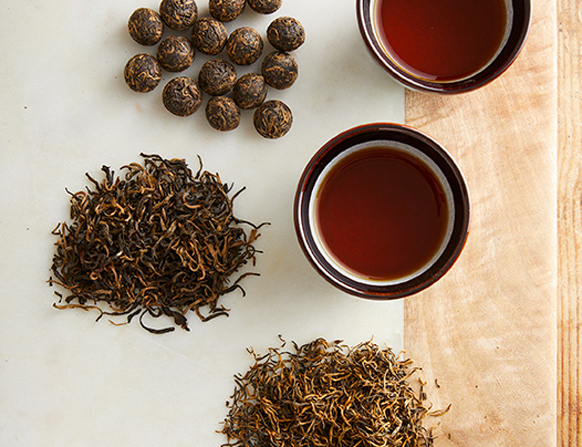
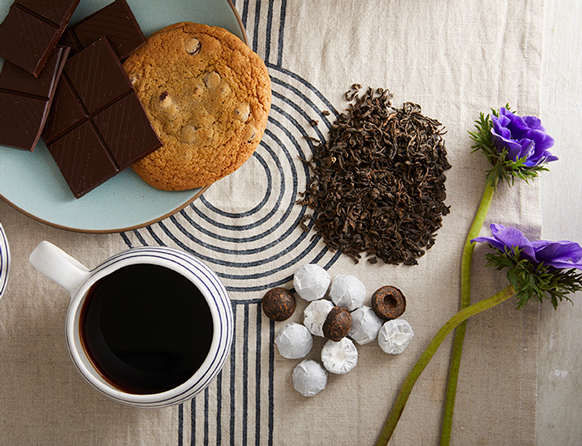
PU-ERH & HEICHA
3-5 grams or 1-1.5 Tablespoons per 6 oz. of water
200° - Boiling
Shou: 3-4 Min.
Sheng: 2-3 Min.
Pu-erh is the only fermented tea. Known as “aged teas” or black teas, Pu-erhs owe their renown to their processing which allows their flavors to enrich over time. Made in two general styles – raw or uncooked known as Sheng; and cooked or ripe, known as Shou or Heicha. Both styles, loose leaf and compressed, are enjoyed as cakes, bricks, and nuggets.
Shou Pu-erhs have an earthy flavor, with a bouquet of peat, roots, mushroom, and malt. Sheng Pu-erh has a wonderful and complex mouthfeel offering earthy aromas of raw beet, potato, and malt. We recommend rinsing the leaves briefly with boiling water before steeping to open the leaves. Ripe Pu-erh does not get astringent, just stronger. It is best to experiment with raw Pu-erh to find your favored taste profile.
HERBALS & TISANES
4-5 grams/1.5 tablespoons per 6 ounces of water
165° - 195° F
2 Minutes
Herbals and tisanes are a category of steeped beverages that us e herbs, fruits, flowers, or spices. Our herbs and flowers are organically produced and carefully sourced to ensure consistent quality and flavor. Our herbs and tisanes are invigorating, healthy and caffeine free.
Flavors range from rose, Chamomile, Peppermint, Ginger, and Lemongrass to blends offering an enriching and healthy taste experience. Easy to brew, never astringent, enlivening, yet caffeine free, a beverage to enjoy anytime.
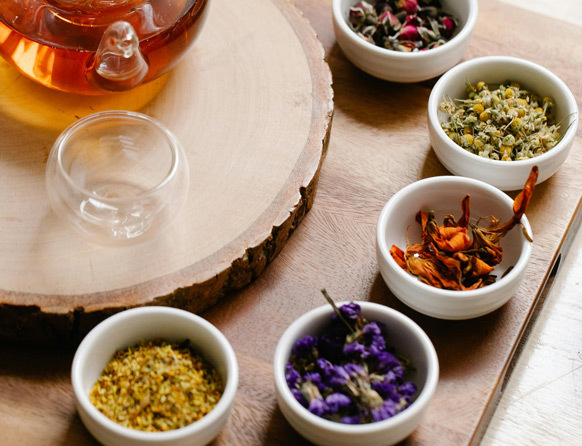
Sign Up & Enjoy 15% Off Your First Order!
Join our newsletter and unlock 15% off your first order—your perfect excuse to explore new teas or stock up on your favorites!